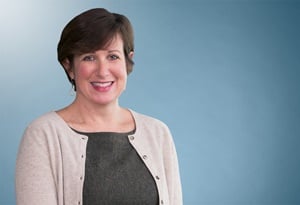Stark Law Final Rule: Changes to Group Practice Definition May Affect Compensation Plans
Among the important changes in the Stark Law Final Rule (Final Rule) issued by the Centers for Medicare and Medicaid Services (CMS) on November 20, 2020, and scheduled for publication in the Federal Register on December 2, 2020 are certain “clarifications” to its definition of a “group practice,” including what it means to distribute “overall profits” of the group. As physician groups must must qualify as “group practices” to be eligible for protection from the Stark Law’s general referral prohibition under the In-Office Ancillary Services exception, it is important that physician groups’ compensation structures conform to these requirements.
Prior to publication of the Final Rule, “overall profits” was defined to mean two different things: the group’s entire profits derived from designated health services (DHS); and the profits derived from DHS of any component of the group that consists of at least five physicians.
In the Final Rule, CMS clarifies if there are fewer than five physicians in a group, the “overall profits” means the profits derived from all DHS of the entire group. In addition, it explains that “overall profits” means the profits derived from all DHS of any component of the group consisting of at least five physicians. Thus, if a practice wishes to qualify as a group practice for Stark Law purposes, it first must aggregate before distribution the entire profits from DHS of the entire group or the entire profits from DHS of any component of the group consisting of at least five physicians. Said another way, group practices may not distribute profits from DHS — either among the full group or any “pod” of at least five physicians — on a service-by-service (split-pool) basis.
CMS explains the allocation of DHS profits need not be the same for each pod of at least five physicians. The practice may choose to distribute all profits earned by one pod among the members of that pod, while retaining all or some of the profits generated by another pod. Further, a practice may use eligibility standards — such a length of time with the practice; full- or part-time participation; or ownership vs. employee or contractor status — to determine whether a physician is eligible for a profit a share.
To illustrate, CMS uses an example of a group practice comprised of 15 physicians, divided into three pods (A, B, and C) of five each. For each pod, the practice must aggregate the profits from all DHS furnished by the group and referred by any of the five physicians in the pod. The practice may then distribute the overall profits from all DHS of pod A using one methodology (e.g., per capita), the overall profits from all DHS of pod B using a different methodology (e.g., personal productivity), and the overall profits from all DHS of pod C using yet another methodology that does not directly relate to the volume or value of DHS referrals of the physicians attributed pod C. However, the practice must utilize the same methodology for distributing overall profits for every physician within each pod. In addition, the practice cannot use different methodologies to distribute profits attributable to different types of DHS within a pod.
In the Final Rule, CMS also clarifies that DHS includes only specified services payable by Medicare. Thus, in its “deeming provisions” describing methodologies for distributing shares of overall profits that will not be deemed directly to take into account the volume or value of referrals, are the distribution of DHS profits in accordance with revenues attributed to services that are not DHS and would not be considered DHS if they were payable by Medicare. That said, because DHS includes only those services payable Medicare, group practices are free to allocate revenues or profits from non-Medicare covered services in any manner they wish.
To enable group practices to make any necessary changes to their compensation programs while complying with the Stark Law’s “set in advance” requirement, CMS is delaying the effective date of its overall profits definition as set forth in 42 CFR §411.352(i)(1), §411.352(i)(2), and §411.352(i)(4) until January 1, 2022.
For more Faegre Drinker insights on this and related topics, view our suggested reading and events.
Related Legal Services
Suggested Reading and Events


